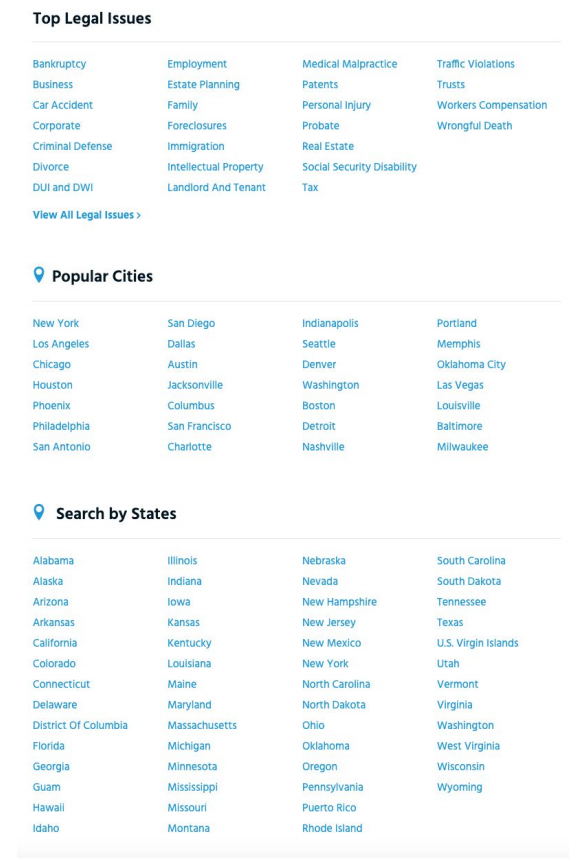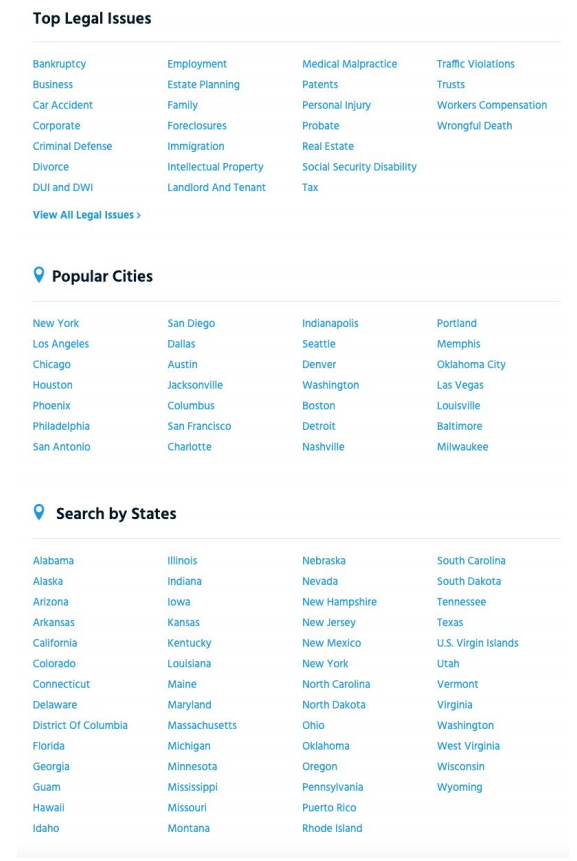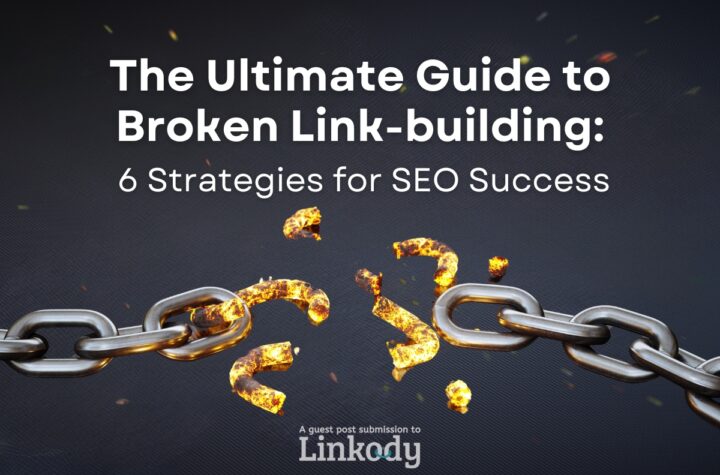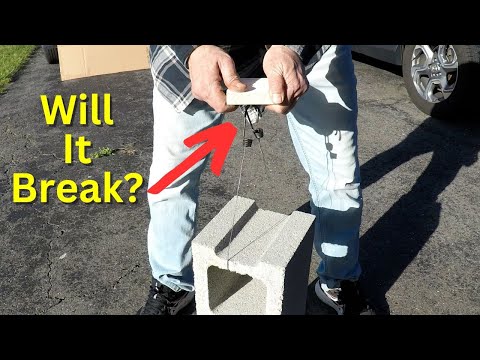
“I don’t know how to do link outreach and I don’t have money to buy links.” – So what internal linking strategy should we follow?”
This is a question I have heard multiple times over the years and I always ask the person if they have WordPress admin access (or access to whichever platform their website is built on), and when they tell me they do I tell them that they can start building links right now.
Link building on your own website is something so easy to do that it’s almost always overlooked. Do you have service pages? Product pages? Category pages? There are endless ways to interlink and use fairly aggressive anchor text in doing so, while not appearing to be overly spammed.
The best strategy for interlinking is within your blog content. Publishing content regularly on your blog is the smartest SEO strategy you can invest your time and money into. It not only helps you attract organic traffic, but it also gives you content assets that you can use in your outreach.
You are going to find it very difficult to find quality websites that are going to willingly link to your homepage. Unless it’s a press release or a major news announcement that is trending, there is really no reason to directly link to a homepage. In fact, many of the larger authority publications have changed their guidelines to prohibit homepage links.
Websites have become bombarded with guest post requests, link swap requests, and outright bribes for homepage links. Not only has this caused most to just prohibit them at all, but it caused many publications to no-follow all links sitewide.
It started with Huffington Post no-following everything across their entire site, which then resulted in Inc, Forbes, and Entrepreneur to follow suit. Then they became very strict as far as homepage links and naturally, this has trickled down with smaller blogs and websites adopting the same policies.
So, when you perform outreach you need to have great pieces of blog content to pitch. This must provide value and offer reasons for the website to link to it. If a website is receiving several dozen pitches daily what is it about your blog post(s) that will stand out and make it impossible for them to deny your pitch?
Take this approach of Internal Linking Strategy from day one, and as you are creating content interlink with other relevant content on your blog. If you already have blog content, audit it, going through it all looking for opportunities to link within your own website. This is great for your SEO and as you build your website’s authority over time it helps to evenly distribute that authority throughout. This helps raise all of your pages in Google’s organic search results.
If you use Yoast’s SEO plugin it will show you how many outgoing internal links you have in each post. You don’t want to go overboard, but having a few links pointing to additional content on your site is great for SEO and it helps to keep your visitors on your website longer. This reduces your bounce rate and increases the chance of them converting.
Silo Linking: Main Keyword and Long-Tail Variation (Internal Linking Strategy)
Using a silo content strategy on your website is another simple way to interlink and create a very healthy and strong SEO base to build from. If you look at some of the best websites out there you will see that they are heavily invested in this strategy.
Some fear triggering a Google penalty with this strategy, but that shouldn’t even be a concern as long as you are publishing high-quality resource pages on your site. Sure, if you are throwing up low quality spun content it’s going to get you in trouble, but not if you are creating valuable 11content assets and linking to them using this strategy. I’m going to show you a perfect example of how this can be done. Lawyers.com is the leading authority when it comes to law firm directories. If you look at their Find a Lawyer page you will see this:

They have a top legal issue section, a popular city list, and an option to search by state. Each of those links brings the user to the corresponding page. When you look at the metrics for that main silo page you will see that it’s DA 68 and PA 53, leading you to believe that they have made an effort to build links to this resource page in order to build its authority.
Why?
Because that authority then gets distributed to all of those other resource pages that are linked out from the main silo resource page. If you take the time to really comb through that website you will see that they rely heavily on this strategy. When you truly understand how to create silo pages and increase their authority by earning links from websites that consider it a helpful resource you can really leverage them to pass link juice to other pages that target lower competition terms.
At scale, this can really snowball your organic traffic. It can be done for any niche or industry. You just have to get creative. A small local landscaping business could create one major resource top-of-the-silo page that talks about lawn care tips, and link out to individual pages targeting the local towns they service.
This can be done to look perfectly natural — a helpful resource, and not a link building scheme. You can even take it a step further and turn your pages that target your main keywords into mega-resource pages, and then link out to pages that target long-tail variations. There are multiple ways to do this.
Just look at Barstool Sports footer and you will see how they are passing juice to their pizza rating website:

Is that done for SEO purposes? Of course. Very few people, if any, are reading Barstool and looking in the footer for pizza recommendations. They know that their authority can be leveraged to help those pages rank, driving traffic to their pizza app website, which then translates into downloads and users.
That is a great example of how to use a silo linking strategy correctly, even though they are linking out to another site it’s one they own. Don’t be afraid to get very aggressive with this. Lawyers.com does it very aggressively and it hasn’t hurt them. In fact, it’s helped them greatly.
Advanced Interlinking to Pass Authority (Internal Linking Strategy)
Once you fully understand the power of interlinking you can then start to get very creative with ways to create very powerful and authoritative resources on your website that you can then leverage to push up other pages on your site in the SERPs.
One of the best examples of this I have seen in a while is Neil Patel’s Ubersuggest tool. It’s quickly become one of the most popular keyword research tools and SEO strategy tools out there. There is a free version so it’s something that everyone can use to some degree.
He acquired the tool and placed it on his own website’s domain, redirecting the previous ubersuggest.com domain as well. Why? Because he knew he could leverage it and drastically increase his authority with it. It currently sits on https://neilpatel.com/ubersuggest/ and as of this writing the DA is 88 and the PA is 67, with just under 172,000 inbound links.
Read that again. Just under 172,000 inbound links. To that one URL. That is amazing. There are a few pages on his site that receive a massive benefit from this: the blog, as well as his consulting and training pages.
Now, acquiring Ubersuggest cost Neil Patel $120,000 so it was a hefty investment that not every business is capable of dropping, and understandably so. But, that doesn’t mean you can’t create something as equally epic. That tool fits perfectly with his audience. The trick is to do the same.
What if you are a basketball blog? You could create an infographic of the top 50 players of all time. If the design is great and the content is fun you can easily attract links from authority sports websites and increase the strength of the page. Then, by interlinking out to other pages on your site you can leverage that newfound authority to benefit your SEO across the board.
You can also create an interactive resource on your website. For example, Rate.com has a mortgage calculator resource:

This is something they can use in their outreach, offering financial websites or personal finance blogs to link to it. It’s a resource that is very helpful, doesn’t require an opt-in, and is put together very nicely.
I can promise you that they are intending to leverage this to pass authority just by looking at what links they have below it. They are linking out to inner pages using “mortgage rates” and “different home loan options” as anchor text.
Think about what your audience is going to see as something of value. Not necessarily your visitors specifically, but rather your broader audience. Remember, this is a link building tool to pass authority. If you can come up with a resource that accomplishes both, great.
Rate.com’s mortgage calculator is a great example of that — it’s something that relevant sites can link to as a helpful resource as well as something their own visitors will find useful. It acts as a link building magnet as well as a lead generation magnet.
Link Out to Authority Sites and Resources (Don’t Be Afraid to Leak Juice)
Every page on your website should link out to a website reference point that has authority in the eyes of Google. This could be a Better Business Bureau profile, a Wikipedia page, a news article from a major media outlet, or a case study.
Again, it will depend on your website. A local dentist might link out to resources on the ADA’s website. A law firm might link to an article from the FTC’s website. Here is an example from a law firm blog article:

The link out to KBB, which is the top authority when it comes to car values. DO they have to link to that resource in order for their article to make sense? No, of course not. The potential law firm client could read that article without the link, but linking out to other websites is part of a healthy Internal Linking strategy.
I talk to many website owners that don’t link out because they fear passing link juice to other websites. I can promise you that not linking out and only interlinking will raise a red flag. It’s not natural.
Remember, it’s important to make your link profile, both inbound and outbound, as natural looking as possible. If someone had a website and was blogging without having any SEO knowledge would they link out to other articles and resources? Yes, they would. It’s a natural thing to do.
If you are really worried about losing a little link juice look at the biggest websites in the world. They link out to several resources in every article, across thousands of articles. If anything, not linking out will actually hurt you.
Referencing authority sites that Google already trusts is a great way to get them to associate your website in the same category. While not instant, over time it’s going to help if you not only acquire links from authority sites, but also link out to them from your content.
One thing I will advise you against is linking to other websites that you are competing with, as I have seen some clients link to competitors and even affiliate sites in some instances that were selling their products.
Use common sense here. In the example above the law firm article links to Kelly Blue Book, an automotive pricing resource. They aren’t competing with them for their target keyword or for any keyword for that matter.
It’s an authority website that was highly relevant to that particular article. Don’t misinterpret authority sites with niche-relevant websites. Make sure the article or resource you are linking to is relevant to the particular page you are linking from. That’s what is important. Passing a little authority to the KBB site isn’t harming that law firm, but if they were linking to an automotive article on a competing law firm’s blog it would be a different story.
Request a free website audit today or call us at +91-9717778130 to start using SEO for your website!





More Stories
The Ultimate Guide to Broken Link Building: 6 Strategies for SEO Success
SEO Game Changer: How Topic Clusters and Pillar Pages Can Skyrocket Your Rankings?
Every AI SEO Tool Mentioned At Pubcon Vegas